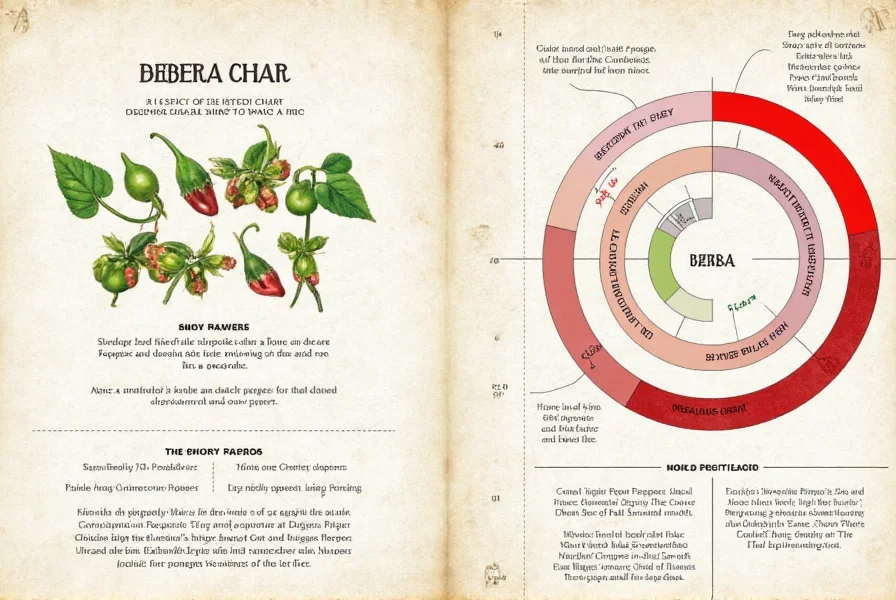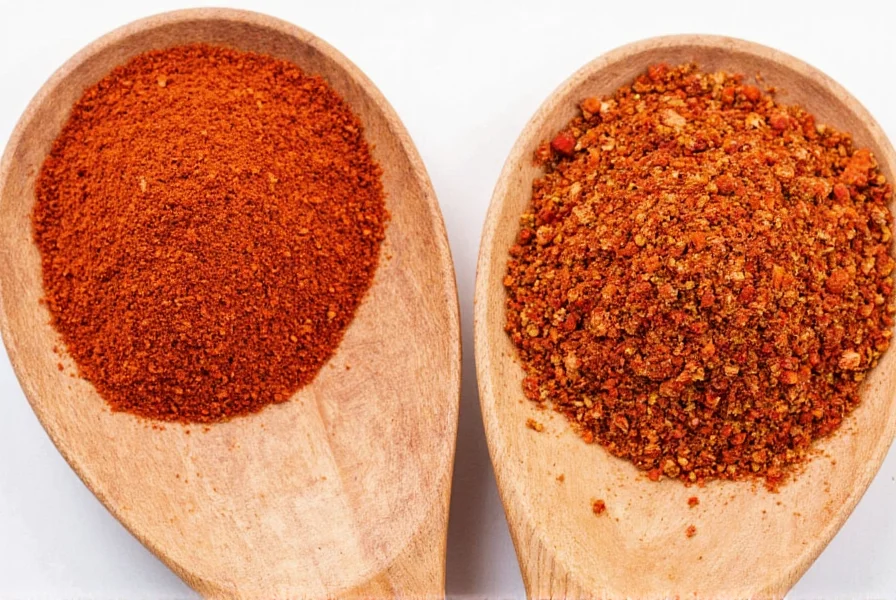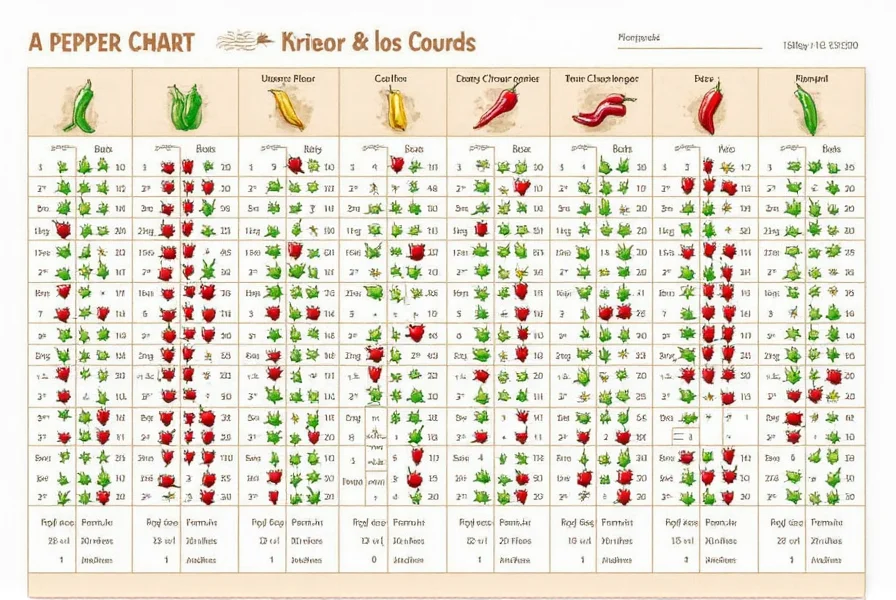Explore the complete Scoville scale pepper heat chart to compare spiciness levels of common peppers. This visual guide helps you choose the right pepper for your dish without unexpected heat surprises.

Scoville Scale Pepper Heat Chart
| Pepper Type | Scoville Heat Units (SHU) | Heat Level |
|---|---|---|
| Bell Pepper | 0 SHU | Mild |
| Jalapeño | 2,500–8,000 SHU | Moderate |
| Hatch Green Chile | 1,000–8,000 SHU | Moderate |
| Cayenne | 30,000–50,000 SHU | Hot |
| Habanero | 100,000–350,000 SHU | Very Hot |
| Ghost Pepper (Bhut Jolokia) | 1,000,000+ SHU | Extremely Hot |

The Scoville Scale measures pepper heat intensity based on capsaicin concentration. Higher SHU values indicate greater spiciness. Use this chart to select peppers that match your desired heat level for cooking, sauces, or culinary experiments.
Historical Evolution of Heat Measurement
Developed in 1912 by pharmacist Wilbur Scoville, the original organoleptic test required human panels to detect heat in diluted solutions—a method prone to sensory fatigue and inconsistency. By the 1980s, High-Performance Liquid Chromatography (HPLC) replaced subjective tasting with precise capsaicin quantification, though results are still converted to Scoville Heat Units (SHU) for public reference. Modern standards now differentiate between total capsaicinoids and dihydrocapsaicin variants, explaining why identical SHU values may produce different sensory experiences. (Source: American Chemical Society, 'The Scoville Scale: A Spicy History,' https://www.acs.org/content/acs/en/education/whatischemistry/landmarks/scoville-scale.html)
Contextual Boundaries for Practical Application
While this chart provides baseline guidance, three critical limitations affect real-world usage: (1) Environmental factors like soil composition and sunlight exposure cause SHU variations of up to 40% within the same pepper variety—verified by UC Davis agricultural studies; (2) Culinary context matters significantly, as dairy ingredients can neutralize capsaicin's burn while acidic components intensify perceived heat; (3) Individual physiology creates divergence in heat perception, with genetic differences in TRPV1 receptors making some people 100x more sensitive to capsaicin. Always test peppers incrementally in recipes and consider regional growing conditions when sourcing ingredients. (Source: University of California Agriculture and Natural Resources, 'Pepper Heat Variability in Cultivation,' https://ucanr.edu/blogs/blogcore/postdetail.cfm?post=24912)











 浙公网安备
33010002000092号
浙公网安备
33010002000092号 浙B2-20120091-4
浙B2-20120091-4